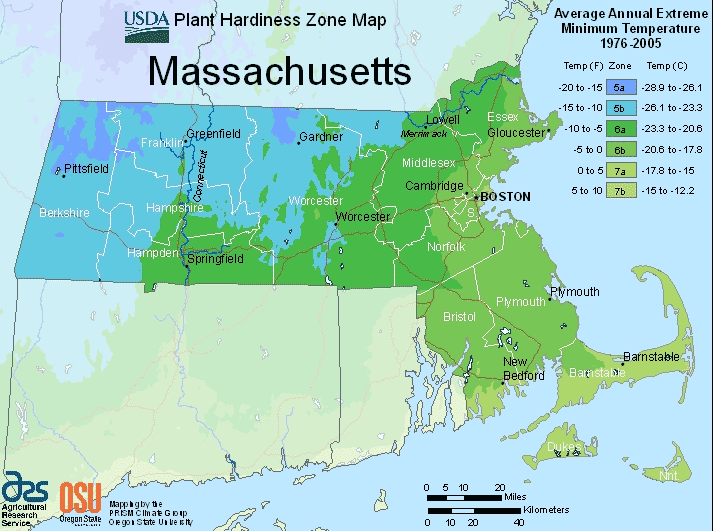
Massachusetts has a humid continental climate, with cold winters and warm summers, ranging from USDA Plant Hardiness Zones 5a through 7b. Temperatures can vary per different areas of the state so get to know which zone your city is located in so that you can address and avoid potential issues before they become problematic.
The USDA zones map is a useful system for determining what plants will survive and grow in certain areas ofMassachusetts.
Understanding how these hardiness zones work means you can choose the right planting time, and optimize growing for your climate.
Far southeast coastal areas are the broad transition zone to Humid Subtropical climates.
The warm to hot summers render the oceanic climate rare in this transition, only applying to exposed coastal areas such as on the peninsula of Barnstable County.
The climate of Boston is quite representative for the commonwealth, characterized by summer highs of around 81 °F (27 °C) and winter highs of 35 °F (2 °C), and is quite wet.
Frosts are frequent all winter, even in coastal areas due to prevailing inland winds.
Due to its location near the Atlantic, Massachusetts is vulnerable to nor’easters, hurricanes and tropical storms.